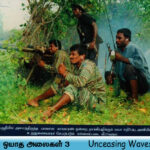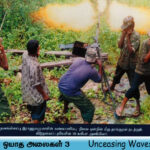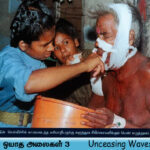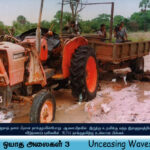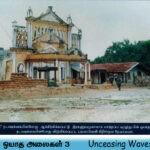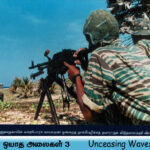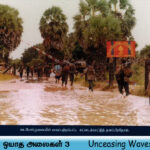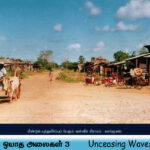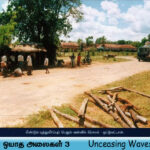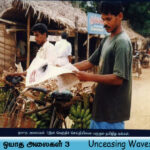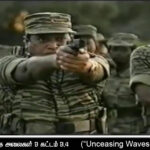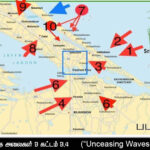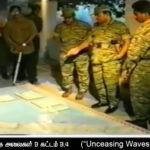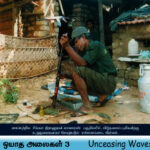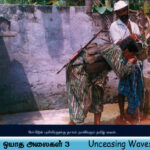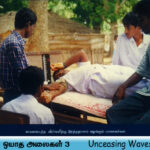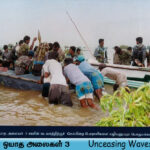

“Unceasing Waves 3” A Warfare Study – Article 2

LTTE´s “Unceasing Waves 3” (Phase 3, 4)
- A Warfare Study
- Article 2
I mentioned at the end of the previous post that the US Army’s Historical Minimum Planning Ratios, if their position is prepared and fortified when the enemy is defensive, must have three times the number of attacking forces.
Based on the US Army’s Historical Minimum Planning Ratios, the LTTE must have had at least 51000-75000 fighters to attack and defeat the 17000-25000 Sri Lankan army’s prepared and fortified positions in the Elephant Pass.
However, with just under 7,000 fighters, the 17000-25000 Sri Lankan army’s prepared and fortified Elephant Pass deployments were toppled.
How did the LTTE manage to do this?
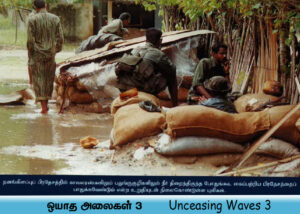
We need to find a scientific answer to this. What is that scientific answer? Warfare has a theory called Force Multiplier. Let me simplify and summarize this theory.
Force Multiplier some factors in the war have been identified as helping to achieve feats that are only possible with multiple numbers in small numbers. Those factors are called force multiplier.
In military science, force multiplication or a force multiplier refers to a factor or a combination of factors that gives personnel or weapons (or other hardware) the ability to accomplish greater feats than without it.
Let me explain this more simply.
For example, if 100 people are required to reach a military target, it must be achieved by ten people. The factors that make it possible to reach the goal with these 10 people are called force multiplier.
Warfare researchers list some such as force multiplier factors. They are
Morale
Mobility
Technology
Intelligence
Deception
Military Tactics
Military strategy
Geographical Features
Weather
Through this Force Multiplier Theory we can now understand the LTTE’s record of bringing down less than 7000 fighters to 17000-25000 Sri Lankan Army’s set of prepared and fortified Elephant Passes. What were the Force Multiplier factors that were the major reason for this achievement of the LTTE?
First Morale
This can be interpreted in many ways as mental strength, willingness to sacrifice one’s life at any moment. This Morale of the LTTE is the main reason why they have been able to control the battlefield for 26 years, despite the militant factors against them.
The morale of the freedom fighters came from the national leader Prabhakaran. Prabhakaran is the leader who has made countless sacrifices for the fighters. More precisely, the LTTE loved Prabhakaran as much as it loved the independent nation of Tamil Eelam.
The reason was that they could see before their eyes the life of struggle of that single man with his honesty, ideal determination, and sacrifice and leadership qualities. That is why the Black Tigers were able to walk away with a smiling face before the attack. Even a few seconds before his death, he uttered the words ‘brother bond’.
“The moral is to the physical as three to one“
– Napoleon Bonaparte
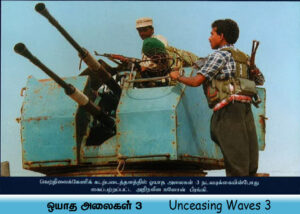
Other Force Multiplier Factors
LTTE Intelligence, deception, Military Tactics, Military strategy. I have described these in detail in the previous section of this post. At the same time, it should be noted that the geographical features of the landscape where the Elephant Pass was located were against the LTTE.
No more direct combat
In the previous section, I had said that conventional warfare has a bourgeois name for fighting strategy in an ‘opposite’ approach. No more about that. Western military archaeologists present some theories as ways to win a war.
One of the most important of them.
Material Resources, sometimes referred to as Force Ratios
Here victory goes to the side that has more troops, and more and better weapons. Since resources have to be brought into action, a related component is logistics and further back in the causal chain, economic capacity of a society. Material resource theories emphasize both immediate preponderance of forces on the battlefield, and long-term application of resources for a campaign or war; over the longer periods, these are theories of attrition, wearing down enemy resources until the larger force wins.
This theory can be simply summarized as follows: As mentioned in many of my posts, troop strength, firepower, weapons technology and logistics are the most important factors in determining the outcome of a war.
When a part has such factors many times more than its adversary does, it insists on adopting a direct combat system so that the adversary’s resources are completely depleted.
That direct combat method is called Attrition warfare.
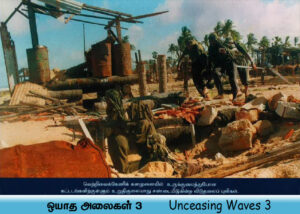
How is Attrition warfare trying to accomplish its goal of ‘completely depleting’ the enemy’s resources?
Attrition warfare places great importance on the complete destruction of enemies and their resources. Enemies here mean their lives. Attrition warfare uses the term body count.
Its approach is to move towards the point where at some point the enemy’s resources will be depleted, even if the losses are high on their side and the resources are relatively many times higher, while continuously attacking the enemy.
In the firepower attrition model of warfare, belligerents seek to wear down the physical forces of the enemy through favorable exchange rate. The focus is on the tactical level, since enemy casualties are the goal, and success is measured by “body counts.”
It does not matter where tactical success takes place as long as casualties are inflicted. Deployments tend to be broad and line. Objectives are generally defined in terms of terrain. Set piece frontal attacks are the norm and both sides usually suffer high casualties.
The side with the most resources has the best chance to win. I will explain this Attrition Warfare method of warfare as an example of the war between the LTTE and the Sri Lankan Army.
In the previous section I had given the force situation that was in the period 1999-2000. The total strength of the Sri Lankan Army is at least 150000. The maximum number of LTTE cadres is 14000.
Force Ratio (1:10) according to this calculation. That means there are at least 10 Sri Lankan armies against every LTTE fighter.
The data above reflect the Military Participation Ratio (MPR) of the time.
What is Military Participation Ratio (MPR)?
The total population of Sri Lanka at that time was approximately 2 crores. One and a half crore of them are Sinhalese. 75% of the total population. 19 lakh Muslims. 9% of the total population.
There are about 22 lakh Sri Lankan Tamils. 11% of the total population. The force will be proportional to the proportion of this population. This can be understood by the Military Participation Ratio (MPR) criterion.
This MPR is a percentage of the total population enlisting in the military. The population of Sri Lankan Tamils in the North East in the late 90s was approximately 17 lakhs (after 1981, no census was taken until 2011).
Of these, about 5 lakh were Tamils in areas under the complete control of the Sri Lankan military. The remaining 12 lakh Tamils were in LTTE-controlled areas and areas where their mobility was high. (Areas controlled by the LTTE or where the army is not present). It is from these 12 lakh people that the LTTE must recruit for its movement.
The Sri Lankan military estimated the number of LTTE cadres in 1995 at about 14,000. (The Directorate of Military Intelligence (DMI), according to a recent publication, had estimated in 1995 that there were fourteen thousand fighting members in the Liberation Tigers).
Warfare study scholar Taraki Sivaram also established through his lengthy research article that this estimate is almost correct.
In this study article he established the Military Participation Ratio (MPR) of Tamils as 1.1 percent. This means that the LTTE’s recruitment ratio is 1.1 (1.1 per cent of the base population). That is, of the population in LTTE-controlled areas, 1.1 per 100 have joined the LTTE.
What does this show if the LTTE can mobilize only about 14,000 of these 12 lakh militants? It shows that they have mobilized their mobilization through political propaganda and persuasive methods. This means that an individual is inspired by the LTTE’s propaganda and voluntarily joins. I.e. volunteer soldiers.
If the LTTE had raised the MPR to 10 percent by compulsory recruitment, the number of their fighters would have been 120,000. Nevertheless, the LTTE does not want to do that.
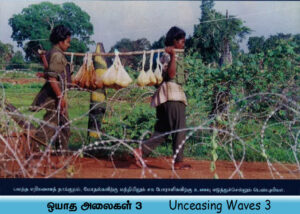
It should also be noted that there are many disadvantages to compulsory recruitment. The militant’s sincere contribution, fighting spirit, sacrificial thinking, and determination will crumble.
Taking the Sri Lankan army like this, they mobilized their 150,000 troops from their 1.5 crore Sinhalese and 19 lakh Muslims. That is, 150,000 soldiers from a population of 16,900,000. I.e. MPR 0.9 percent.
According to the MPR, the ratio was Force Ratio (1:10) against the LTTE. Even if the LTTE had probably increased the MPR to 10% by force, the Sri Lankan military could have maintained the Force Ratio (1:10) by forcing recruitment.
So no matter how you look around, Sinhalese (75%) and Muslims (9%) together keep 84% and maintain the Force Ratio of at least 10 troops per LTTE fighter. Thus the Casualty Exchange Ratio is of paramount importance when it comes to the Force Ratio (1:10) against the LTTE. Behind this lies the goal of Attrition Warfare.
What is the Casualty Exchange Ratio?
It points to the death toll in the war between the two sides. Proportional account of how many lives have been lost on the enemy side against the loss of one of us. The Casualty Exchange Ratio is the LTTE’s most successful annihilation war in Sri Lanka
Was at a ratio of 1-to-4 or 1-to-5.
For example, at least 1,500 Sri Lankan soldiers were killed in the LTTE’s “Unceasing Waves 1” offensive against the Mullaitivu military base. 330 LTTE fighters were killed. Its Casualty Exchange Ratio is approximately 1-to-5. That means 5 soldiers have been killed instead of one LTTE fighter.
Similarly, at least 1,200 Sri Lankan soldiers were killed in the LTTE’s “Unceasing Waves” of war on the Kilinochchi Military Complex-2. The LTTE handed over the bodies of 684 soldiers to the International Committee of the Red Cross (ICRC).
240 LTTE fighters were killed. The Casualty Exchange Ratio is almost 1-to-5.
Similarly, in many operations carried out by the Sri Lankan Army, the Casualty Exchange Ratio was in favor of the LTTE 1-to-2 or 1-to-3 was therefore. That is, the death toll of the Sri Lankan military was two or three times higher than that of an LTTE fighter.
However, the great strength of the Sri Lankan military is its numerical superiority. Therefore, as the Sri Lankan military continues to fight the LTTE, they predict that at some point the LTTE’s resources will be ‘completely depleted’, even if they suffer heavy casualties according to the Casualty Exchange Ratio.
I will explain this to you simply by keeping the force data of the day.
At that point, the maximum number of LTTE fighters was 14,000.
The Sri Lanka Army personnel are at least 150000.
The Casualty Exchange Ratio was 1-to-5, one of the LTTE’s most successful annihilation battles.
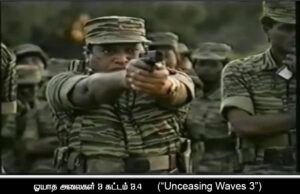
According to this theory, the Sri Lankan army could lose 14,000 LTTE fighters if it loses 70,000 troops on its side, even if it dies at 1-to-5. I.e. Body counts. After that, the Sri Lankan army will have 80,000 troops. The reason is that the Force Ratio is larger than the Casualty Exchange Ratio.
That is why the Attrition Warfare system seeks to increase the body counts of the enemy by taking advantage of the numerical superiority of its military resources and colliding head-on with the enemy.
Let me clarify one more thing for you. I will use the number 14000 fighters and 150000 soldiers again and again to explain this Attrition Warfare method to you.
Do not take this number as a fixed number just flat. No matter what the recruitment of both sides, the Force Ratio between the militants and the Sri Lankan Army will be multiplied in favor of the Sri Lankan Army.
The basic reason for this is that 84% of the total population of Sinhalese and Muslims. 11% of Sri Lankan Tamils. MPR located accordingly. This population distribution is not in the hands of the LTTE.
Planning of the Sri Lankan Army
From the beginning of the Second Eelam War (1990) in Sri Lanka until 2009, Sri Lankan military planners made extensive use of the Attrition Warfare method. The national leader Prabhakaran, who was fully aware of the intrinsic purpose of this Attrition Warfare system, chose the battlefield he needed to deal with it.
Although the Sri Lankan military opened up new frontiers to augment the LTTE’s body counts, it chose only those battlefields of military importance to it.
Important – Kiddu Artillery Brigade
As I mentioned above, the Sri Lankan military used the Attrition Warfare method to increase body counts and ‘completely deplete’ the LTTE’s resources. The LTTE’s Kiddu artillery played a key role in countering this.
I had described in the previous section that the LTTE had seized artillery from the Sri Lankan Army.
In the period leading up to its capture, the Sri Lankan military had to lose significant numbers of militants to destroy bases.
The reason was that they had to face substantial losses before breaking through the fronts of military bases that were heavily fortified. The militants have to face the heavy weapons of the Sri Lankan army.
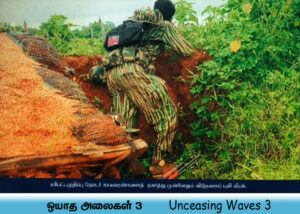
However, the captured artillery, after setting up a separate artillery brigade with motors, was able to conduct the most accurate concentrated artillery fire from a long distance on military bases, on command and control (C2), on logistical bases or on hot support positions. Because of the LTTE artillery attack, the LTTE forces breaking into military bases suffered minimal casualties.
These lesser losses can be seen in a series of battles after the operation “Unceasing Waves 1”. That is, as the Sri Lankan military manipulated the Attrition Warfare to increase the LTTE’s body counts, the LTTE built an artillery brigade capable of precision strikes to reduce casualties on its side.
I have described in the previous section about the set of Elephant Passes captured or destroyed by the LTTE in the Jaffna area where the operation “Unceasing Waves 3” (UW Phase 3,4) took place. I had described in detail how many military bases, army camps, mini camps were destroyed. The contribution of the LTTE’s Kiddu artillery was the main reason for capturing all these with very few fighter casualties.
After one of the world’s famous attack “Kudaarappu Attack”, the Kiddu artillery’s contribution to the operation “Unceasing Waves 3” (UW Phase 3, 4) may have been the main reason for the national leader Prabhakaran´s command to the Commander Banu to set the national flag at the Elephant Pass after capturing it.
Jayakanth














